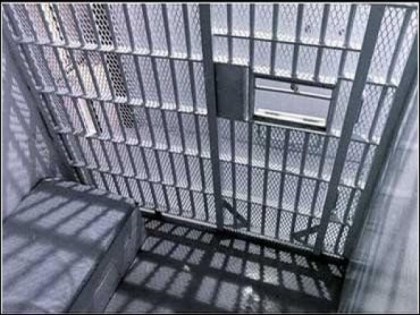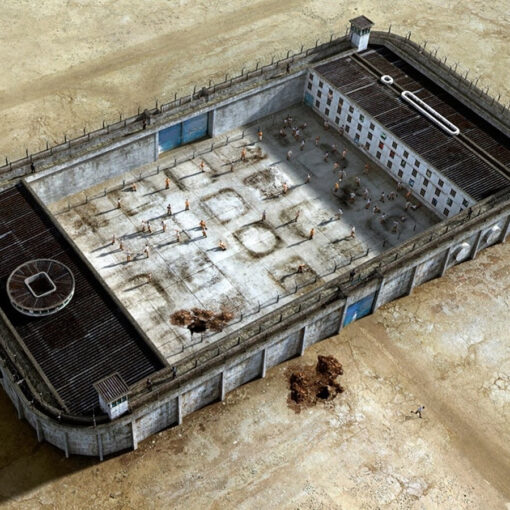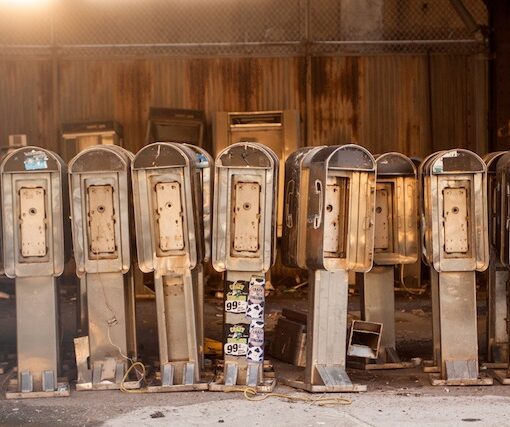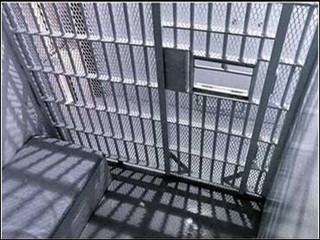 This article discusses the problems of trying to jam contraband cell phones in prison. Besides the significant cost, there are technical issues and regulatory concerns to overcome. We suggest that prisons co-opt the prison cell phone problem by supplying secure cell phones. This will eliminate the value of contraband cell phones and increase revenue through commissions rather than add unaffordable prison cell phone jammer expense.
This article discusses the problems of trying to jam contraband cell phones in prison. Besides the significant cost, there are technical issues and regulatory concerns to overcome. We suggest that prisons co-opt the prison cell phone problem by supplying secure cell phones. This will eliminate the value of contraband cell phones and increase revenue through commissions rather than add unaffordable prison cell phone jammer expense.
It’s not an insignificant problem. Mobile phones make their way into prisons by visitors smuggling them in — in whole or in part — or from prison employees who can make thousands of dollars per cell phone. Since cell phones aren’t explicitly considered contraband under federal law, there’s not much punishment for employees who sneak them in. California found more than 4,000 phones in 2009, while the feds found close to 2,000 in their prisons and work camps. In a recent case in Maryland, a number of employees were indicted after the DEA wiretapped a jailed gang leader, catching him complaining about having to settle for salmon and shrimp, instead of lobster, to go with his champagne.
There seems to be some agreement by parties on polar ends of the spectrum that something should be done, but none on what that should be. Activists like Melamed argue that creating a sort of dampening field that prevents all cell phone calls isn’t the blunt force approach it is portrayed as being, and that granular approaches like increasing the criminal penalties of bringing a cell phone into a prison, and targeting rogue cell signals, is too expensive for prisons and the state budgets that fund them.
Then there is the matter of legislative priorities: Even if health care reform is voted out of the Congress soon, after a year of sucking all the air out of the room, jobs and the economy (or a prolonged period of partisan gridlock) are on the horizon.
But Melamed is optimistic that the furor over moving Gitmo prisoners to federal prisons will prompt the House to pass the bill that the Senate approved last year — the idea that Al Qaeda-connected prisoners might be able to get phones and plan attacks on American soil will be enough, he thinks, to break the impasse.
As far as the well-heeled telecom industry is concerned, purgatory is just fine for this bill. What better fate is there for a technology they see as inelegant and ineffective, not to mention its track record of inadvertently blocking genuine networks?
“Radio waves do not recognize walls,” the Wireless Association’s Chris Guttman-McCabe says.
“To effectively jam a jail, you have to jam 100 percent of the space,” Guttman-McCabe says. “And the same prison employees that get you the phone will get you to the places where the signals work. To get 100 percent of the space, you will have to overjam.”Melamed tried unsuccessfully to get the 1934 Communication Act ban on jamming overturned in federal appeals court, but it was thrown out on the grounds that his objection should have been raised when the law was passed. The Wireless Association argues that changing the law to let the FCC approve jamming requests is a bad revision of a good law that has served the country well for decades.
It’s one of the few things that the Wireless Association and the public interest group Public Knowledge agree on. Last summer, the group asked Congress to kill the jamming proposal, saying that the technology wouldn’t work and ingenious prisoners would simply find a hack around the jamming. Instead, the group argued that prisons could cut down on the demand by replacing expensive collect calls that prisoners currently make, with a reasonably priced alternative.
The group also makes a slippery slope argument that once jammers are allowed in one location, they’ll show up in other spots. More than one school administrator has gotten riled up enough about student texting and using mobile devices that they’ve ordered and turned on cell phone jammers, without knowing that they were illegal.
Who among us hasn’t dreamed of being able to jam annoying cell conversations in restaurants and movie theaters? As a practical matter, you can buy illegal jammers via the internet and find DIY instructions online.
While Melamed says the penalties for using those kinds of jammers should be increased, he also thinks there’s a place for jammers — such as in the hands of the bomb squad or in a prison.
“With a well-engineered system, the signal stops at the wall,” Melamed said. “The poorly engineered stuff you can buy online is the stuff that should be banned.”
But the Wireless Association says jammers aren’t that precise, and have a history of going on the fritz and blocking devices way beyond prison walls. They also argue that for jammers to be effective, they have to go after frequencies that abut spectrum used for public safety and first responder radios, raising the possibility that they could be collateral damage. They support, instead, a bill from California Sen. Dianne Feinstein that would make it a felony, punishable by a year in prison, to provide a cell phone to an inmate.
But that situation simply points out, according to the Wireless Association’s Guttman-McCabe, why smarter solutions that monitor cell frequencies for rogue phones are a better solution. That technology can track phones by their registration numbers and then blacklist them.
Melamed acknowledges that those solutions are good tools, but says they are too expensive for cash-strapped prisons and just aren’t as effective.
He compares jammers to a using a bug bomb.
“With jamming, no more bugs come back,” Melamed said. “Cell phone controlling is like capturing one cockroach at a time.”
- Multi-Blockchain System for Inmate Forensics - April 2, 2024
- Blockchain to Secure Attorney-Inmate Privacy for Prison Calls - June 28, 2023
- meshDETECT® Announces Grant of Ninth Patent For Blockchain Wireless Services - August 26, 2022




